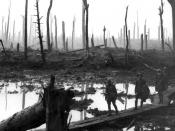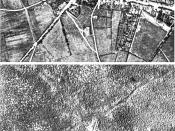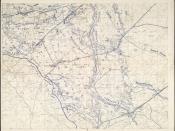Passchendaele, Before and After Passchendaele could be described as one of the most controversial battles of World War I. Difficulties arose through a dispute between the British generals and politicians, all of whom had a different idea on the strategy of war. The actual necessity or futility of the battle is still disputed to this very day. Officially named the Third Battle of Ypres, Passchendaele took place several miles north of the town of Ypres. The town, traditionally a center of textile weaving was completely flattened as four years of battle raged nearby and in the town. Magnificent architecture from medieval times was destroyed by artillery fire including the Cloth Hall built in 1214.
World War I was believed at the time to be the war to end all wars. Therefore it was called the Great War and raged through Europe between 1914 and 1918. The battle of Passchendaele began on July 31, 1917, with a huge onslaught of Allied artillery.
This military offensive both warned the Germans of the coming attack but it also turned the battlefield into a mess of huge craters. With unusually heavy rains, the entire area was transformed into a sea of mud. The soldiers slept in the mud, crawled in the mud, fought in the mud, and drowned in the huge craters left by heavy bombing. The mud also clogged rifles, ruined food, and rendered artillery useless.
These photographs are stunning but what you can't see in the photograph to the right is the fertile pastureland, which had been reclaimed from marsh over the years by an elaborate drainage system. The water table was near the surface, even at the height of summer, and this reclaimed land was extremely vulnerable to artillery fire that would destroy the drainage system and allow the land...


